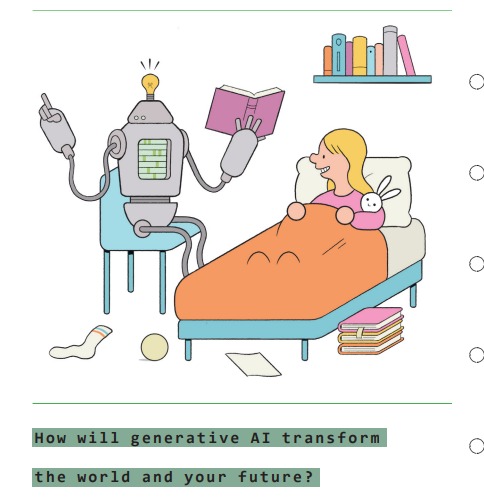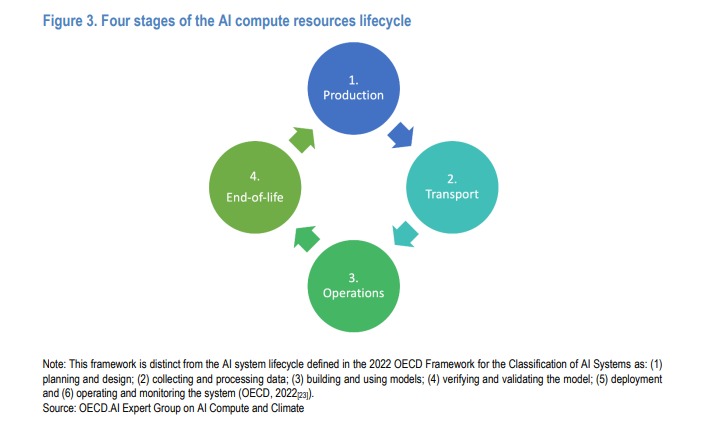Welcome to a new blog series, called Deep Dive. In this series, we look at a trending topic and find interesting points of view from different library eResources. This week, we explore the topic of artificial intelligence.

For a brief introduction to AI, you might like to check out this cover story from New Scientist, ‘How to think about AI…and how to live with it’. In this story, the magazine explores questions such as “how does Chat GPT work?”, “how will generative AI transform the world?” and “could AI ever become conscious?”. This article also explores chatbots churning out misinformation, scientists wondering if they can give AI a sense of ‘feeling’ by connecting them to a robot ‘body’, and ways that AI is already assisting in medical breakthroughs. There’s also a story about a journalist who asked ChatGPT to help suggest a recipe, only to be told to use roast potatoes as a garnish, a nonsensical but delicious idea. Those wanting a brief overview of the topic of AI might also enjoy the eResource Opposing Viewpoints In Context (Gale), which provides helpful summaries on a range of topics, including AI.
As the publication Australia Points of View: Artificial Intelligence points out, artificial intelligence is not a new concept. The publication defines artificial intelligence as the “ability of machines to perceive and process information, maintain knowledge, adapt behaviour in response to inputs, and otherwise show traits associated with intelligence.” There are many things in everyday life that the publication argues are AI, such as algorithms that deliver watch recommendations on streaming websites, online search engines, and even the Roomba vacuum cleaner. However, a technology becoming more commonplace still requires a critical eye. To again quote Australia Points of View: Artificial Intelligence, “AI has already raised many ethical concerns, including threats to the rights to privacy and due process as well as the amplification of bias and extremism.” Cited case studies range from stories about AI being helpful for managing crops and reducing road accidents, while also exploring an example of AI being used in the United States to help determine the fate of prisoners up for release, an especially controversial use of a tool which some argue has inbuilt biases against certain demographics, such as African Americans.

This paper from the OECD Digital Economy Papers; Paris explores another important consideration, the environmental impact of AI technologies – both negative and positive. The report “aims to improve understanding of the environmental impacts of AI and help measure and decrease AI’s negative effects, while enabling it to accelerate action for the good of the planet.” The paper elaborates on this, stating “AI can accelerate progress in many domains by creating efficiencies that decrease environmental impacts and lower emissions. However, the training and use of large-scale AI systems can also require massive amounts of processing power, memory, networking, storage and other resources – collectively known as “AI compute” – which can have significant environmental footprints”. For an example of AI being used to help with environmental issues, you might be interested in the article Using Artificial Intelligence to Tackle Food Waste and Enhance the Circular Economy: Maximising Resource Efficiency and Minimising Environmental Impact: A Review, which explores how AI could “tackle food waste and enhance the circular economy… monitor and optimise food production and supply chains” and “redistribute excess food to those in need.”

The American Journal of Public Health offers a discussion around the utilisation of AI in telemedicine. The journal explores the growing popularity of telemedicine services, due in large part to more people having access to digital devices as well at the COVID-19 pandemic. This, working in parallel with advances in AI technology, has led to artificial intelligence being explored as a way to ease pressure on healthcare services. Examples of this include machine learning algorithms being used to help with “diagnostic support, remote monitoring, prediction and detection, robot-assisted treatments, and biomedical research.” However, this work also comes with ethical concerns, including “exacerbating discrimination and health inequity because of flawed or biased data sets used to feed and train ML [machine learning] models” as well as “infringing on patients’ autonomy as a result of the misuse of people’s health data for third-party economic interests.”
There are many more articles and resources exploring this huge topic of artificial intelligence, far more than we could ever summarise in a blog post! If you’re interested, we encourage you to explore our many eResources for peer-reviewed and well researched publications on the topic. All of the above references were accessed through our eLibrary resources, which are free with your Wellington City Libraries card.


